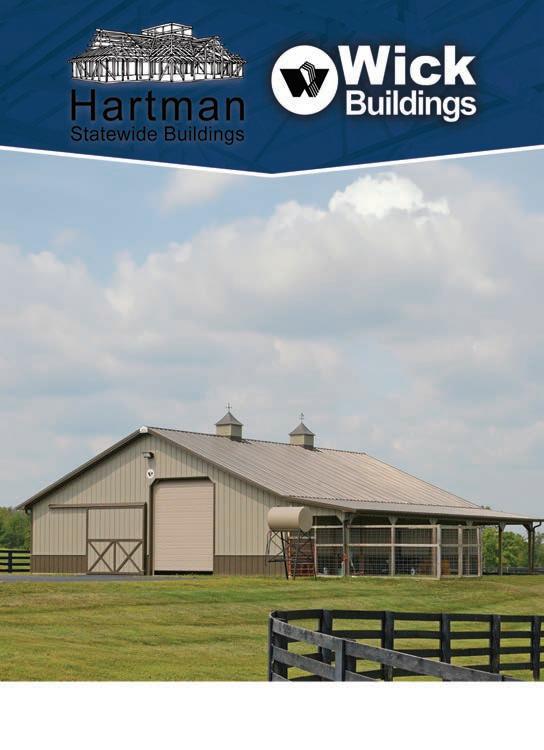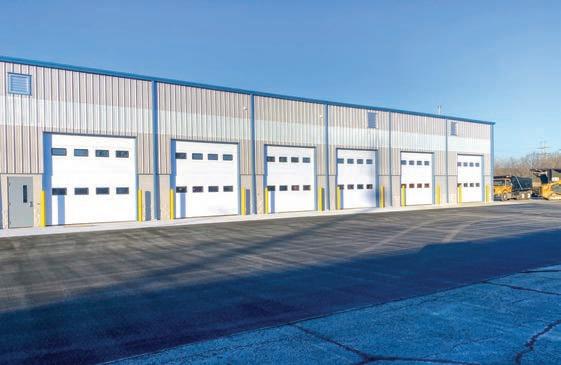HERITAGE BREED
Meishan pigs
date back 5,000 years
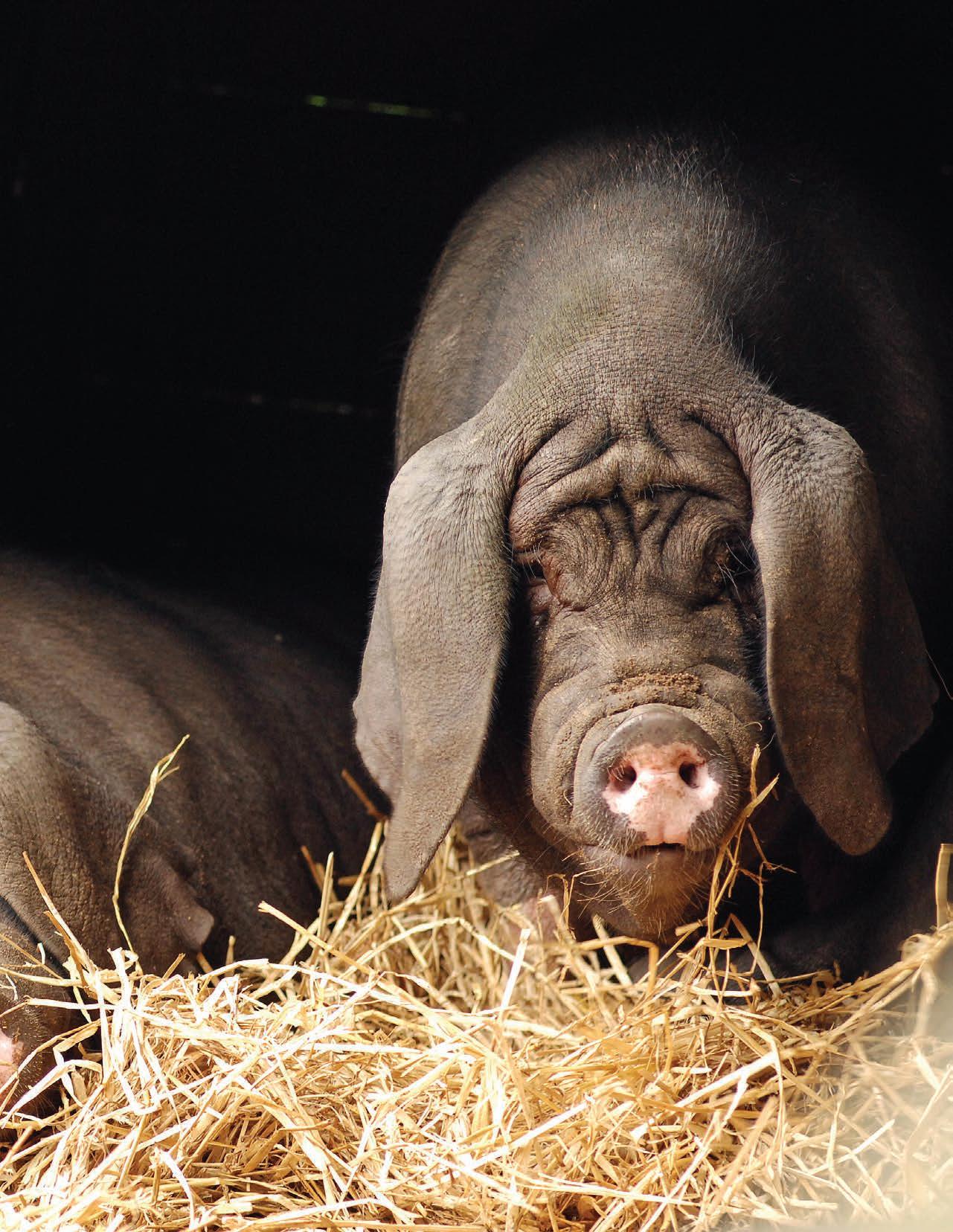
Also:
•Prevent combine fires
•Celebrating 50 years of supporting local farmers, communities
• Farmland owners get tips for success

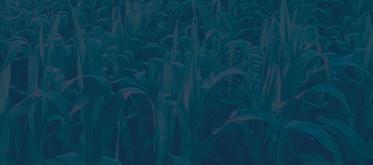





Michael Alvarado Spring Valley (815)664-4145

Ron Behrends Tiskilwa (815)646-4121

Tyler Hansen Walnut (815)379-9297

G.W. Leynaud Spring Valley & Princeton (815)872-0914

Mike Morris Princeton (815)872-3333

TJ Scruggs Princeton (815)872-3333
Bureau
General Manager/ Advertising Director Jeanette Smith jmsmith@shawmedia�com
Editor Jim Henry
Writers Martha Blum
Tom C Doran
Jeannine Otto
Photographers
Jeannine Otto
Designer Liz Klein
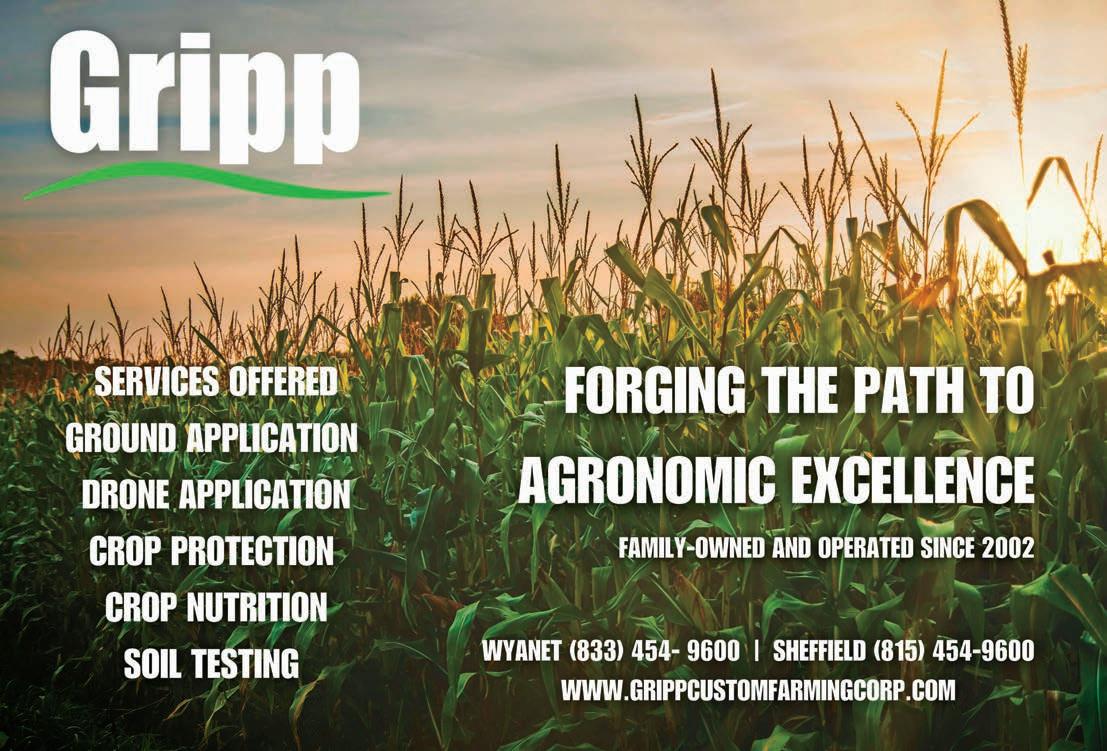

THE SPIRIT OF DEDICATION.
Commitment that’s one of a kind. Agribusiness solutions you trust.











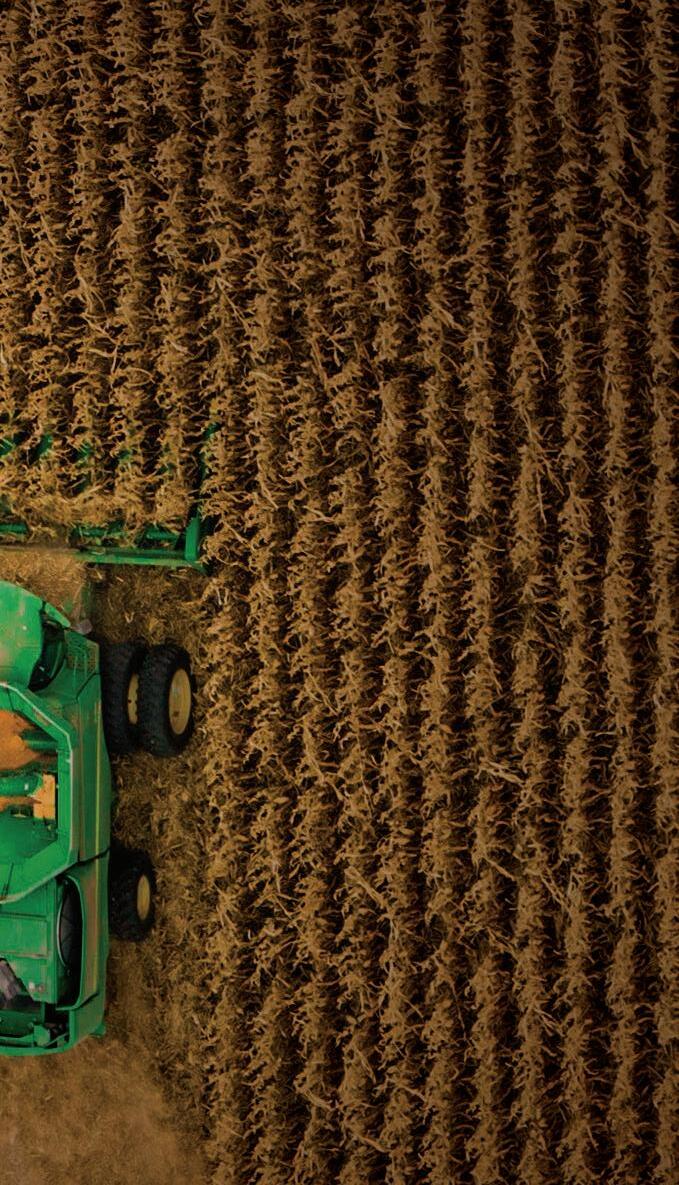



Prevent combine fires
By JEANNINE OTTO jotto@shawmedia com
AMBOY, Ill. — A garden tool that will be making an appearance in many yards and gardens can also help prevent combine fires.
“Keep a leaf blower in the cab and keep your combine clean,” said Mark Wolf, the store manager for Johnson Tractor in Amboy in north-central Illinois.
As harvest ramps up, combines will be running long hours. With recent dry conditions across much of the Midwest, the danger of field fires and combine fires increases.
Wolf said the addition of a battery-operated leaf blower to the combine and using it at least once a day, at the end of the harvest day, to clean off the combine, is a top fire prevention tip.
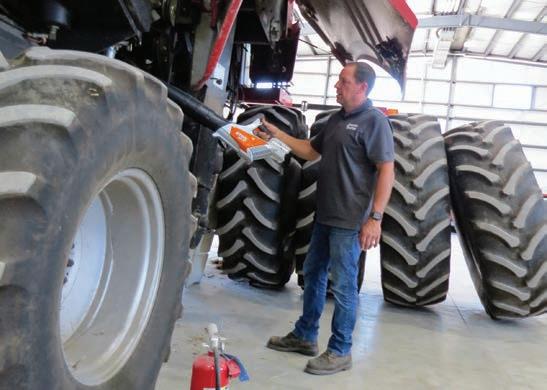
AGRINEWS PHOTO/JEANNINE OTTO
Mark Wolf, store manager for Johnson Tractor’s dealership in Amboy, Illinois, says a common, garden-variety, battery-operated leaf blower can be a big help to farmers to prevent combine fires
That tip comes from one instance of a combine fire, where the machine burned after the operator had left it at the end of the harvest day.
“In the 33 years that I’ve been here, I think I’ve only lost one combine, through the Amboy store. That combine that burned, burned after they left it for the night. So, don’t wait until the next day to blow it off. Blow it off before you leave for the night,” Wolf said.
“Take the time to leave it running and walk around the machine while it’s running to listen for a squeak or for noise. Farmers know what their combine is supposed to sound like to they know when something is not right.”
“If they have their own service truck and an air compressor, they can use that. They are probably blowing the combine off to maintain it, but that is something they should be doing throughout the day,” he said.
In addition to using the leaf blower to keep the machine

and the grain head free of dust and debris, Wolf said operators should take a few more minutes at the end of the harvest day to do a walk around of the combine.
While utilizing a leaf blower to rid the machine of dust and debris is a top fire prevention practice, Wolf said farmers should also make sure that the cleaning hasn’t caused a fire hazard.
“Be careful when you’re
Prophetstown Farmers Mutual



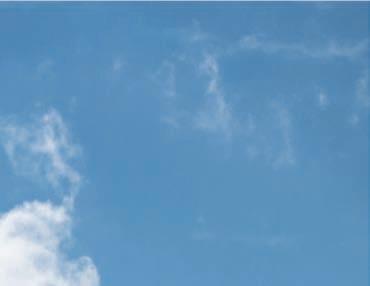



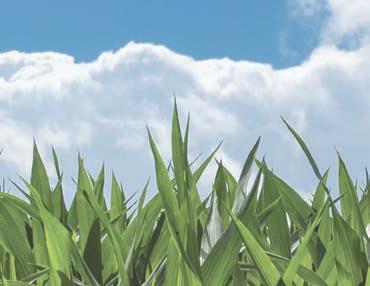
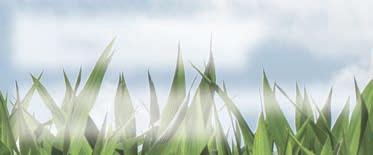



blowing it off because if there is something warm or hot, you’re going to speed it up. Do it at night so you know it’s clean and if you smell something or see something, you’re aware of it then,” he said.
Johnson Tractor offers customers combine clinics, where technicians go over all the necessary combine preparations prior to harvest.
The company also offers customers combine inspections, where technicians go over a combine to check for wear that can cause breakdowns and fires.
“We offer combine inspections and the technicians will go through your combine, they take pictures and video and then we’ll have you come in and show you what’s going on, what needs to be fixed immediately, what can wait,” said Ken Updike, who works in the parts department at Johnson Tractor’s location in Juda, Wisconsin.
“It gives the farmer a good idea of where the wear points are and some things they may not have noticed.”
Wolf said that technicians target mechanical parts that can
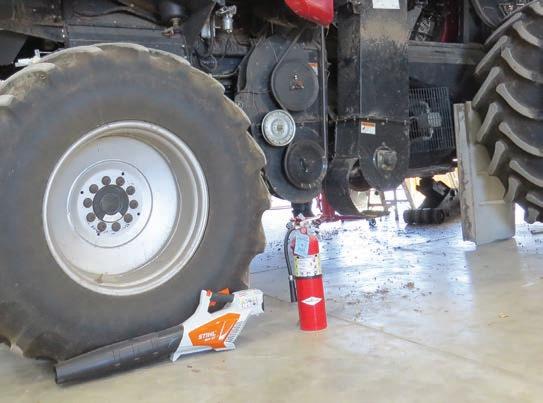
AGRINEWS PHOTO/JEANNINE OTTO
Making sure combine fire extinguishers are charged and up to date, making sure that combine operators know how to use them and using a battery-operated leaf blower to blow off the combine and keep it free from dust and debris are top tips�
malfunction and create a spark.
“We are looking for worn sprockets, worn pulleys, a loose bearing, that’s going to cause a spark. We’re looking for those loose components during an inspection to avoid a bearing failure,” he said.
Updike advises farmers to watch for debris buildup as they
go through fields.
“Try to reduce your trash buildup. You see some combines where the top of the feeder house is just covered with crop debris or leaves or whatever,” he said.
“It doesn’t take that long to take a rake or a broom and just pull it off there. It’s an ignition
source that you need to get rid of.”
Fire extinguishers are another part of the fire prevention tool kit for combines, and Updike said farmers should check the dates on extinguishers and should also make sure that whoever is operating the combine knows how to use them.
“You should have one by the cab, one by the engine compartment. Check the dates on them, too, because they do expire — they aren’t good forever,” he said.
“If you do have one that is expired, use it to have a little training session for whoever is operating your combine, ‘Here’s how it works.’”
Wolf said soybean harvest can be especially hard and create fire hazards.
“Bean dust is a finer dust so there’s more of it. The chopper bearing is the main thing because that’s running at a faster speed. The rotor is running at a faster speed,” he said.
“The combine itself is not moving any faster through the field, but the components of the combine are turning faster and anything that’s running faster is going to create more heat.”

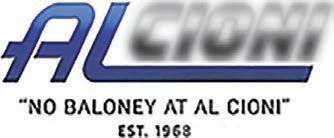


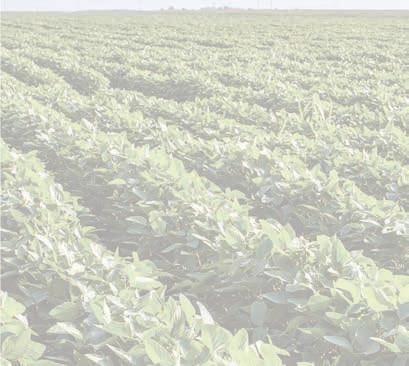




Low river levels hit shipping
Hike in grain transport cost
By JEANNINE OTTO jotto@shawmedia com
ANKENY, Iowa — While baseball fans are eying a World Series title and football fans hope for a Super Bowl victory for their favorite teams, Midwest farmers are facing a reoccurrence of a not-so-positive event — diminished water levels on the Mississippi River that could hinder movement of grain during prime shipping season on one of the country’s major inland waterways.
“We are experiencing a three-peat of the low water conditions that we had in 2022 and 2023,” said Mike Steenhoek, the executive director of the Soy Transportation Coalition, based in Iowa.
The STC is made up of the American Soybean Association, the United Soybean Board and 13 state soybean boards that represent some 85% of total U.S. soybean production.
Low rainfall levels throughout the Midwest in the late summer and early autumn have caused water levels on the upper and lower Mississippi, as well as the Illinois, Missouri and Ohio rivers, to drop.
“Since about mid-July, there’s been a real scarcity of precipitation throughout the Midwest and the whole land area that feeds into the Mississippi River watershed. That includes the Ohio River, the Illinois River and the Missouri River,” Steenhoek said.
“We are slightly above where we were at this time last year, but that’s not a consolation prize because 2023 was a low water event.”
Steenhoek said the low
river levels come at an especially important time for river shipping.
“This is the real critical period. November is really the high month for grain shipments, but there are significant volumes moving in October, November, December and early January,” he said.
“When our harvest in the Midwest comes online, we really need to have that supply chain well positioned to accommodate it. Unfortunately, that is not happening right now.”
One of the negative impacts of the low water levels is pressure on barge freight rates, and Steenhoek said those costs could be an additional pain for farmers already facing low commodity prices and high input costs.
“When your supply chain is not operating at full throttle, the metaphor I use quite frequently is that you are at-
taching a garden hose to a fire hydrant,” he said.
“You have this big volume of soybeans and corn coming online, but you don’t have a transportation system that can fully absorb it. You have these inefficiencies that are created and what that does is it puts upward pressure on barge freight rates.
“What usually happens in agriculture is when there is a transportation cost increase, those costs are not usually passed on to the customer. It is not absorbed by the shipper.
“It is usually passed on to the farmer in the form of a more negative basis. It’s one more thing when a lot of things are encroaching on a farmer’s wallet right now.”
Steenhoek said barge operators are coping with the lower water levels by limiting the amount of grain loaded onto each barge and by limiting the number of barges in a








FARMING THE FUTURE










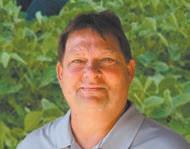

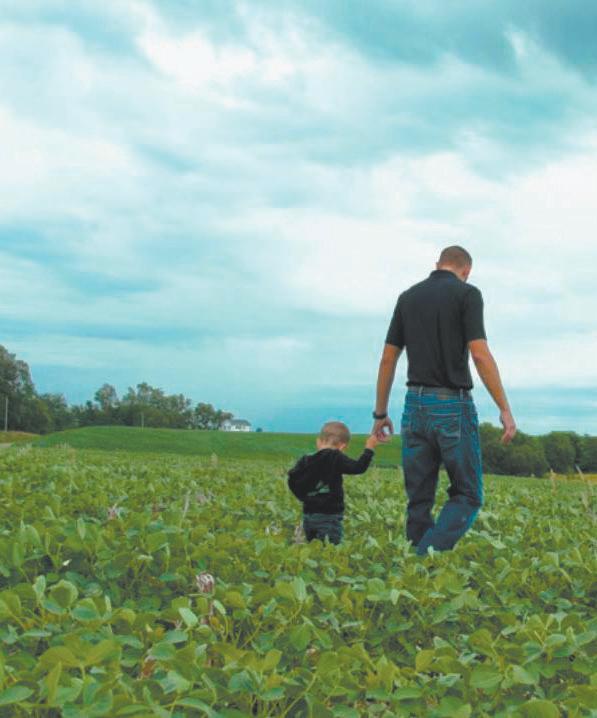



Tows on the lower Mississippi tend to be larger than tows on the Mississippi River above St. Louis, due to the lock system on the upper section of the river.
“Barge companies right now are having to respond by limiting the tonnage that they put in an individual barge due to the channel being more shallow,” Steenhoek said.
“There’s a concern that if you load to capacity, you will experience a grounding or, at a minimum, scrape the bottom of the shipping channel. Then, because the channel is more narrow because of less water, your barges are having to resort to attaching fewer barges together.”
While rain is the obvious answer to what will solve the problem and bring river levels up, Steenhoek said adding resiliency to the supply chain and also being proactive about river maintenance can help minimize the negative effects.
“It’s going to be precipitation that is going to pull us out of this dilemma. But there are things that can be
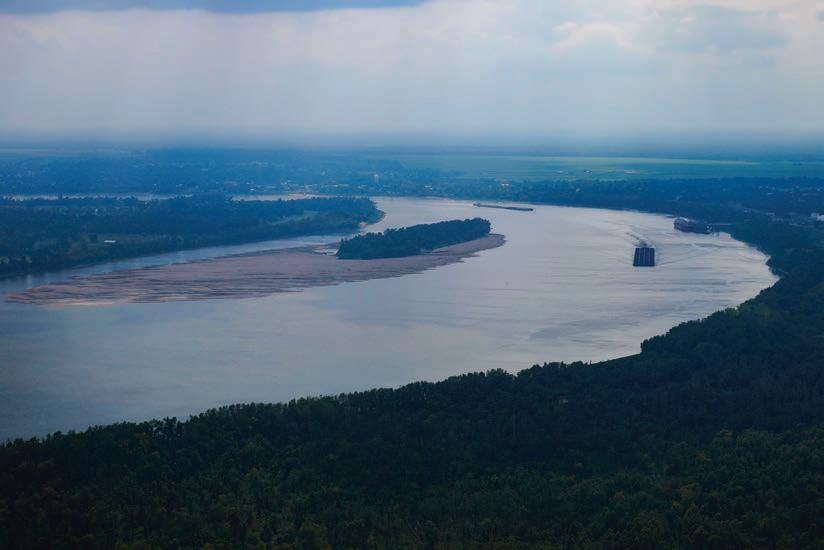
done to help mitigate the consequences, like proactively dredging instead of being reactive in dredging, not waiting for the problem to fully
materialize before you are dispatching dredging vessels to attend to a particular area in which you are having sediment build up,” he said.
“It’s not going to fully overcome the challenge, but it’s certainly a way to help take some of the pain and discomfort away.”










Illinois farmer NCGA president
Hartman to lead national group
By TOM C. DORAN tdoran@shawmedia com
WATERLOO, Ill. — A fifth-generation Illinois farmer has taken the helm as president of the National Corn Growers Association.
Kenneth Hartman Jr., who served on Illinois Corn boards for 19 years prior to joining the NCGA leadership team, operates his Monroe County family farm along with his wife, Anita; daughter, Amanda; and mother, Joann. Their two other daughters, Alexis and Ashley, have careers in other fields.
“My theme as president is ‘Building Bridges,’ Hartman said when he assumed the

post Oct. 1.
“We need to build on our ties with existing allies while cultivating new relationships with other organizations inside and outside agriculture.
“We also need to continue to reach out to policymakers and other leaders who may not represent rural communities but who benefit indirectly from the work of farmers. I strongly believe that coalition building is one of the most effective ways to get things done.”
Hartman served on the Illinois Corn Marketing Board for nine years, followed by 10 years on the Illinois Corn Growers Association board,
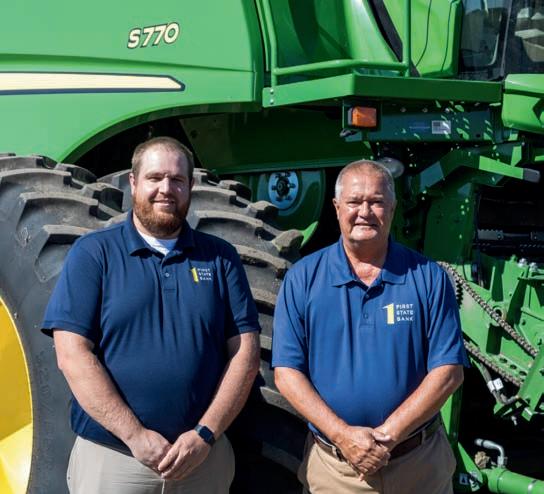


including as ICMB chairman and ICGA president, and six years on the NCGA board in a variety of leadership roles. He’s also a member of the Illinois Leadership Council for Ag Education.
In a recent interview with AgriNews, Hartman spoke of his Monroe County roots, the challenges corn farmers face, and his new role as NCGA president. Here’s what he had to say.
ON FAMILY FARM
“We used to milk cows until the 1990s. We bred registered Holsteins and sold a lot of breeding stock. We had a bull that we leased to Select Sires and was one of the top bulls in the country.
“My father passed away 15 years ago. My mother, who’s in her 80s, is still involved doing some paperwork for
the farm. My wife and I have three daughters. Our oldest daughter graduated from Kansas State and came home and she’s been on the farm the last few years. Hopefully, she’ll eventually take over the farm. Another daughter lives in California and works for Waste Management as an analyst. Our youngest daughter graduated last year from Kansas State and she is in the marketing department of John Deere in Des Moines, Iowa.
“We farm some in the Mississippi River bottoms and some of that’s pretty tough. It had a lot of water on it and we lost some there, but when we get what we call ‘up on the hills’ we’ve got some really good looking crops there. It’s much better than last year when we were in a drought situation.






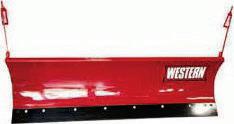







This year, we were in a wet situation. We went from one extreme to the other.”
ON BEING INVOLVED
“My family has always been the type that’s been involved in different things. My dad was on the local co-op board and served on the Monroe County Fair Board for over 50 years. My grandfather was one of the first ones to start the Soil and Water Conservation District in Monroe County and really involved in that, and was on the first Monroe County Farm Bureau board many years ago.
“My mother was on the National Holstein Association board for 10 years and she’s the only woman ever to be president of the National Holstein Association. She was named Dairy Woman of the Year at the 1997 World Dairy Expo.
“My family has always been the type that believes it’s important to volunteer. It’s important for the next
generation to keep things going and advocate for agriculture.
“When we sold the cows years ago, I got involved with Corn Growers and kept working at it.
“I’ve been involved with the Monroe County Farm Bureau for many years and been on the board.
“I was involved with the Corn Growers and then got on some national committees. I then ran for the national board and got elected. I’ve been involved with the NCGA ever since.”
ON NCGA ISSUES
“NCGA just did a strategic plan and the main part of that plan is creating demand. We’ve got a lot of corn out here, so obviously our number one priority is ethanol and we’d like to get the Next Generation Fuel Act passed as soon as we can.
“In the short term, we hope we can get year-round E15. That’s a project we’re


At Compeer Financial we’re defined by you — your hopes for the future as well as your needs today. As a local member-owned cooperative, our clients help shape the direction we go and how we serve them. And as agriculture and rural America continues to evolve, so will we, together. So whether you need an experienced lender or a trusted financial services provider you can count on, we’re ready.
Nate Edlefson Financial Officer (815) 760-2490
Nathan.Edlefson@compeer.com
Dan Legner
Sr. Certified Appraiser (309) 255-0648
Dan.Legner@compeer.com
working on.
“We also are very strongly concerned with trade. We’ve had some frustrations the last two years. We haven’t had a lot of trade agreements and we want to get something going there.
“We just need to create demand. That’s the big thing.
“Sustainable aviation fuel is very important. I recently attended an SAF conference. They’re talking about a 50 billion gallon market there, but it’s probably more long-term. We definitely have to get things set up policy-wise in Washington, D.C., to make that happen.
“One of our concerns that we’re working on is the Section 45Z Clean Fuel Production tax credit for SAF. They group no-till, cover crops and green fertilizer together, and right now there’s probably only a small percentage that actually do all three. We think it’s something that’s going to grow, but we need to have a credit for
each individual one and not all or nothing.
“We’re all about working to have lower carbon intensity scores, sustainability, those are the things we need to do as farmers, but, at the same time, it takes time to get to that point. We’ve done a lot of that in the past when you look at all that we’ve done with precision agriculture and some of the things we’ve done with plant breeding.
“We’re producing more corn, so we need to find places where we can sell it and go with it.”
ON NEW POST
“I’m exciting to be president. We have a lot of challenges right now in agriculture, but challenges bring opportunities and hopefully we can get something done in the next year or so.
“I know we’ve got a big crop, so I hope we can create some demand and get some opportunities for farmers in the countryside.”
Adam King Financial Officer (309) 574-0405
Adam.King@compeer.com
Myron Rumbold Insurance Officer (815) 275-5313
Myron.Rumbold@compeer.com









Heritage breed on regenerative farm
Meishan pigs from China date back 5,000 years
By MARTHA BLUM mblum@shawmedia com
WOODSTOCK, Ill. — Regenerative farming and soil health are the focus for pastured-raised animals at Terra Vitae Farms.
“We have a farrow-to-finish operation where we raise Meishan pigs,” said Colleen Biver, who owns Terra Vitae Farms together with her husband, Mike, and her parents, Kevin and Katie Kelley.
“These pigs are originally from China and they can date them
back 5,000 years,” said Biver at a farm tour during the Learning Circle for Women Farmland Owners event organized by The Land Conservancy of McHenry County.
“They were going extinct and the University of Iowa got interested in the breed and did a breeding program which successfully brought the breed back,” Biver said.
Meishan pigs are known as the red meat of pork.
“It is very rich, dark meat, heavily marbled, and the fat renders at a lower temperature,” Biver said.
“A lot of studies coming out show that pigs raised on pasture have fat that is much healthier since it is high in Omega 3 and 6.”
The family members purchased the farm in 2017, and when they
started selling meat to chefs, they offered a variety of pork.
“They always chose Meishan because it was so tasty,” Biver said.
“It tastes phenomenal.”
The downside, she said, is the cost to raise the heritage breed.
“They grow slower so we’re looking at 12 months if not more for them to go to market,” she said.
“But the pigs are pretty gentle, gentle on the earth, and they are well known for large litter rates, up to 18 pigs.”
The Meishan pigs farrow in the pasture and the farmers have built some huts into the earth for the pigs.
“Farrowing has been a huge learning curve to know when to step in and help,” Biver said. “We have a very good veterinarian who

Meishan pigs are originally from China and they are known for their very rich, heavily marbled dark meat This heritage breed thrives on pasture and has large litters up to 18 pigs
has been very helpful.”
When the family purchased the farm, there was no infrastructure.
“Fencing was a big hurdle to get over for us to do pasture rotation,” Biver said. “It is crucial to have electric fences; otherwise, the animals were getting out.”
The American Meishan Breeders Association recently met at the Terra Vitae farm. The event included about 50 people from around the country, as well as one of the first people who was part of the project that brought the pigs to the United States from China.
Chickens arrive at the northern Illinois farm as hatchlings and they stay in a brooder pen until they are about three weeks old. Then they go to pasture, where the chicken shelter is moved every few days.
That allows the chickens to have fresh pasture and distribute their manure for fertilizing the ground.
“We put our Maremma dogs with the chickens and the chickens will sleep on top of the dogs,” Biver said. “We also raise the dogs, which is my mom’s project, and we have English Shepherds that are used for herding, as well.”
A 22-cow Dexter herd is part of the 75-acre operation.
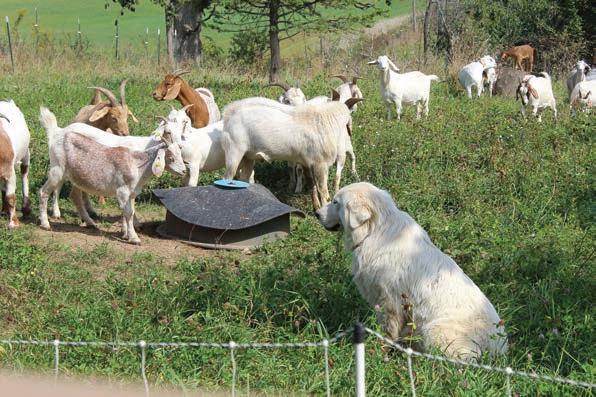
AGRINEWS PHOTO/MARTHA BLUM
Along with several breeds of livestock, Terra Vitae Farms also raises Maremma dogs These dogs stay with the pasture animals, including the Savanna and Kiko goats, to protect them from predators
“We don’t use antibiotics or vaccines,” Biver said. “The finished weight of the cattle is from 800 to 900 pounds.”
Maremma dogs also stay with the goat herd on the farm.
“We use the goats primarily for clearing out and we also process them for meat,” Biver said about the Savanna and Kiko goats.
In addition to selling meat through the farm’s website, the
family members go to the Woodstock Farmers Market and the Dole Farmers Market in Crystal Lake to market their meat cuts. Their animals are processed at Lake Geneva Country Meats.
“Then we take the meat to Hometown Sausage Kitchen in East Troy, Wisconsin, to get cut up,” Biver said. “The two chefs there make phenomenal specialty products.”
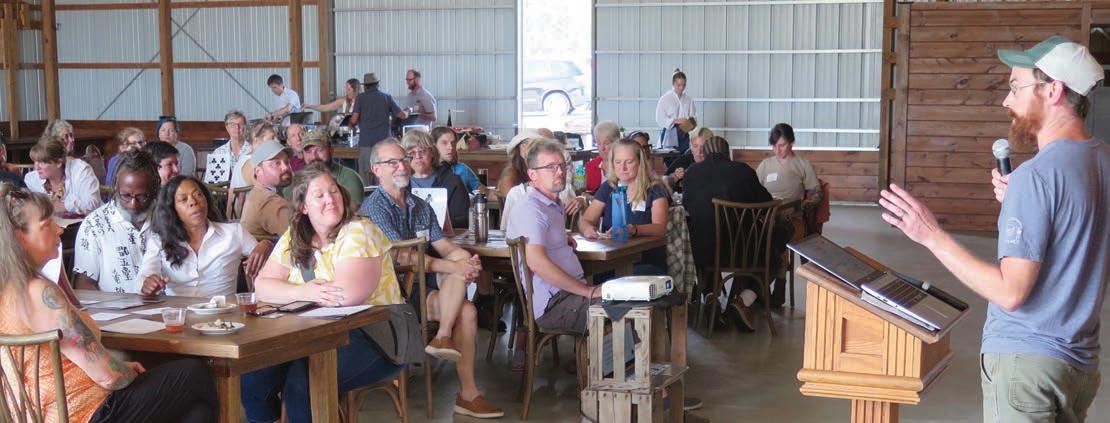
ILLINOIS STEWARDSHIP ALLIANCE
Listening sessions provide roadmap to local food system
By TOM C. DORAN tdoran@shawmedia com
DOWNS, Ill. — Illinois Stewardship Alliance representatives took the oft-used phrase “where the rubber meets the road” literally as they traveled across Illinois to host listening sessions as part of the group’s golden anniversary celebration.
“We have hosted 13 grassroots events all over the state, from top to bottom, from Woodstock early in the summer all the way down to Makanda in southern Illinois,” Liz Stelk, Illinois Stewardship Alliance executive director, said at the final session hosted by Epiphany Farms Estate in Downs.
“We wanted to get farmers, eaters and food system leaders together to celebrate our 50th anniversary, but also to help shape what our organization should be advocating for the next 50 years to make a transition to more local and sustainable agriculture.”
Each listening session included
an overview of the alliance, followed by group discussions to share their thoughts on the biggest challenges facing the farming and food system and solutions to those hurdles.
The input will provide the alliance’s first-ever policy platform, which will serve as a roadmap to a regenerative food system in Illinois and guide its policy work in the years to come.
“What an incredible tur nout. We’re so pleased that there was over 70 folks who came to talk to us about what they’d like to see the future of Illinois agriculture look like,” Stelk said at the Downs gathering.
“We’re getting input first. We have leaders who will get together and take all of this input from all over the state and then draft what are the problems and what are the solutions that we want to see.
“Alliance members are going to read through it, debate it and we hope by December we’ll vote on an agenda and then we’re going
to be set to start 2025 thinking about where we’re headed.
“We’re a membership-based organization, so members set the annual policy agenda and the issues that we’re going to work on. The board sets the priorities for the programming, but we haven’t had like a long-term visionary of where are we headed and what’s it going to take to get there and that it was based on hearing from farmers.
“So, we thought that the anniversary was a really great time to bring folks together to both reflect on the fact that we’ve come this far and also think where do we need to head moving forward.
“This is about the process and the outcome. The process gets people together to get to know each other, share their experiences and recognize that they experience some of the same things no matter where they live in Illinois.
“The outcome is going to be a policy platform that we hope
not just guides our organization, but our state leaders are going to be able take a look at what they can do to be able to support small farmers, local food systems and more sustainable agriculture.
“It’s a valuable process and also a really exciting outcome.”
LEGISLATIVE EFFORTS
Liz Rupel, Illinois Stewardship Alliance lead organizer, said that once the policy platform is developed, it transitions toward conversations with government officials about legislation.
“It’s a great way to show exactly what our supporters and our members want and we will then take it to our caucuses, our caucus members of the alliance, and from there pull out what specific policies they might want to work on,” Rupel said.
“We’ve heard everything from health insurance to pesticide drift to crop insurance and so we’re really looking like between the lines of what was suggested — barriers and solution-wise — to see what we can come up with to present to the legislature.”
Jeff Hake, of Funks Grove Heri-
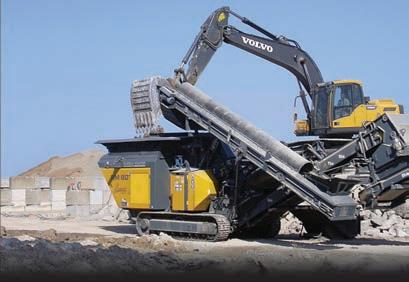
tage Fruits and Grains at McLean, and Illinois Stewardship Alliance local food organizer, directed the listening session with an overview of the group’s efforts, followed by opening up the session for feedback from group discussions.
“These are conversations about solutions to fix the problems that are in our current system because the alliance has been in operation for 50 years and we want to know what our next 50 years is going to look like,” Hake said.
“I feel like we’re making a lot of positive changes in our state in working on state food and ag policy. We have a lot of momentum and I am so excited to get all of these people together and talk about what’s really concerning and especially talk about solutions.”
COMMONALITIES
With the final listening session coming to a close, Hake was asked what were some of the most interesting suggestions he heard throughout the 13 get-togethers across Illinois.
“There’s a lot of common threads. The thing that I keep
bearing in these conversations and also out there in the present day with farmers I know is a lot of conversations about pesticide and herbicide drift as an issue. One farmer’s drift is affecting another farmer’s field. I feel that that’s something that we’ll look at going forward,” he said.
“Also, a lot of towns have lost their small grocery and that means they have to drive 20, 30 miles to get to the nearest grocery store or even a Walmart or something that’s not going to offer you good, local food. So, how do you support those smaller businesses and small grocers to be successful? Those are two themes that I’ve seen.
“As far as solutions, people weren’t just talking about getting local food into institutions, but it was more like let’s leverage this particular thing to get local food into nursing homes, for example. Those people should have access to fresh, good, healthy food. Let’s figure out how to leverage the state of Illinois and its employees as a buyer and use their buying power.
See SESSIONS, Page 16

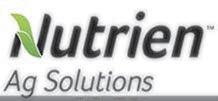


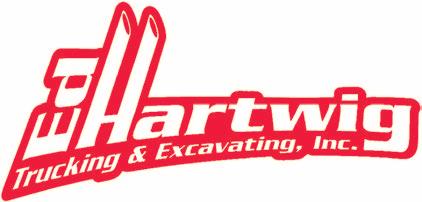
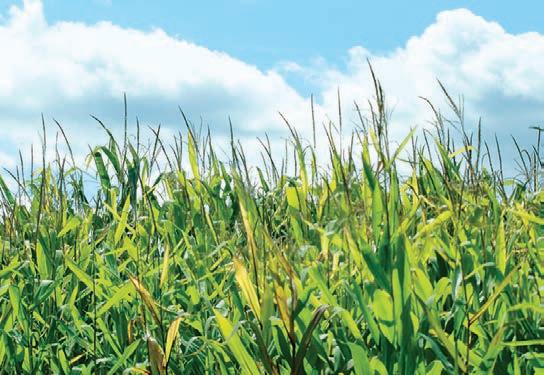





SESSIONS
FROM PAGE 15
“It’s
NEXT 50
Looking ahead to the alliance’s next 50 years, Stelk said it begins with addressing agriculture in Illinois.
“Agriculture is not only changing, but it also has to change. The changing climate is forcing us to make changes to the way we raise and grow food and the way we distribute food,” Stelk said.
“So, whether we like it or not, stuff has to evolve and change, and what we’re interested in is making sure that both the farmers who are already doing that kind of innovative, regenerative, sustainable practices, that they have
what they need, that there aren’t barriers in their way.
“Also, that we can figure out how to not only help them thrive, but also that we can understand what the barriers are for other farmers who could be doing those same kinds of practices so that agriculture can thrive for the next 50 years in Illinois.
“In light of culture in general, the pandemic just so dramatically changed how people think about food, their feeling that they want to know where their food comes from and they want to ensure that it’s local.
“We’re also getting to sort of ride the momentum. There’s so much interest in local food, but it’s just not easy. Our agricultural system wasn’t necessarily built with small farmers, local food producers and direct marketing in mind. So, there’s just a lot of barriers that need to be taken down to make things more scale a risk appropriate.”
INFRASTRUCTURE DEVELOPMENT
Stelk said it’s also important to rebuild processing infrastructure that has went by the wayside.



“There was a time when every town had its own mill, meat lockers and meat processing. These things are so much chicken and the egg. You really need a network of people talking to each other because you can just put up a poultry processor. You need enough farmers raising poultry,” she said.
“So, in order to get that kind of future, a lot of what we have to do is not just build the community, but bring it together, make it more visible, so that they can connect and identify opportunities to build the infrastructure, because folks are so isolated and they have such a drive, and there’s so many entrepreneu rial spirit and people who want to build things.
“But you can’t take on that risk unless you know, so ever ybody kind of has to grow at the same time, which means that we need to know each other, we need to trust each other, we need to understand the opportunities and then at the end of the day people need to still value having local food that was raised by people they know.”
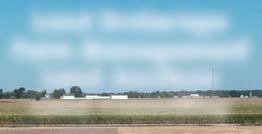



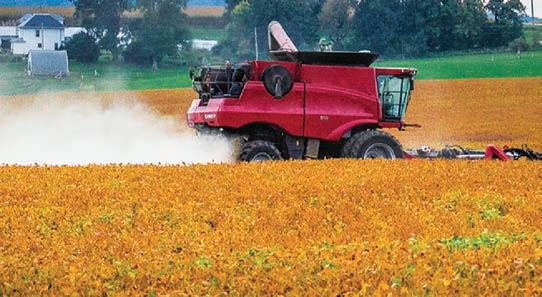

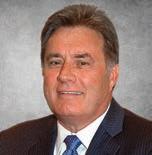
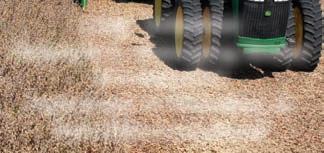
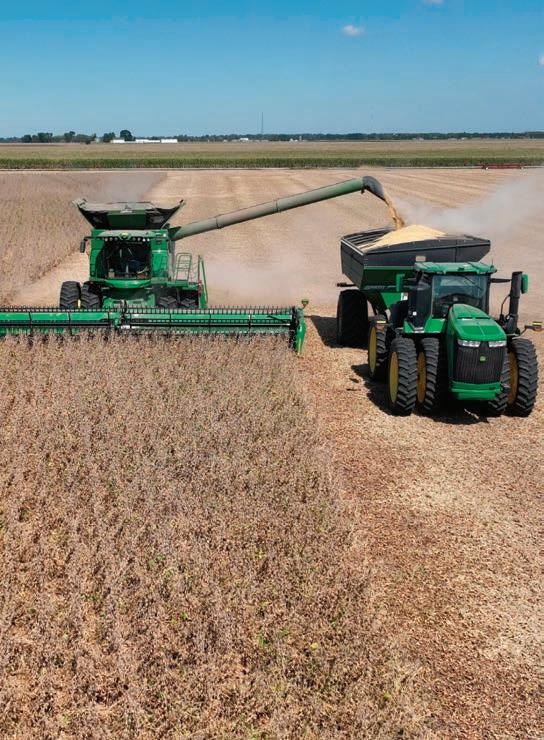





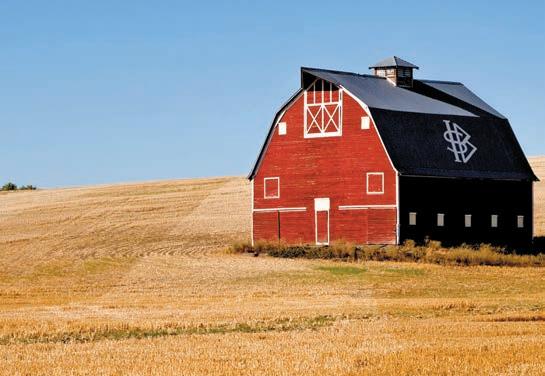








Celebrating 50 years of supporting local farmers, communities
By TOM C. DORAN tdoran@shawmedia com
SPRINGFIELD, Ill. — Over its 50-year history, the Illinois Stewardship Alliance’s causes may have shifted, but it has never lost its focus on advocating for local farmers and communities.
The organization was formed 50 years ago by three college students in southern Illinois advocating for people of that region in coal- and energy-related matters.
Dave and Roz Ostendorf and Mike Schechtman, students at the University of Michigan’s School of Natural Resources in 1974, founded what was then call the Illinois South Project.
“The Arab oil embargo had just sparked a renewed interest in coal. Long
scorned in favor of cleaner fuels, coal now seemed to promise salvation from the energy problems, and southern Illinois seemed to be in for another boom,” Jessica C. Weber wrote in a 1979 Illinois Issues story.
“But the Ostendorfs and Schechtman had a different focus. They wanted to know what the next coal boom would mean to the people in the region. Driving around southern Illinois, knocking on doors and talking to anyone who would talk, they became convinced nothing much was being done to prevent the new boom from following the old patterns of exploitation.
“With seed money from the Illinois South Conference of the United Church
of Christ (of which Ostendorf was an ordained minister), the three opened a makeshift office in their joint residence in Carterville.”
Five years later, the Illinois South Project had an office in Herrin, and the staff grew to six full-time members who operated as a collective, taking turns acting as coordinator.
“Illinois South Project started making waves right away. In its first year, it published Coal Gasification in Illinois: Problems for the People. At a time when coal gasification was being hailed as a clean way to use Illinois’ high sulfur coal, the handbook sounded a warning that the process would bring problems, as well as solutions,” Weber wrote.
“Since then, Illinois South branched out, taking on a
variety of projects directed at improving the economic health and quality of life in southern Illinois. Most, though not all, are directly related to coal and energy issues.”
Beyond focusing on the eminent domain, coal development and coal gasification, the Illinois South Project established the first farmers market in Carbondale in 1975.
“It started in southern Illinois when mining was an issue and the group came together to organize around that, but we’ve always had this strong organizing focus as we kind of shifted, and now we’re a statewide organization,” said Liz Rupel, Illinois Stewardship Alliance lead organizer.
“We’ve really held the reins on that and really
focused on sustainable ag, local food policy, but throughout our history we’ve had those deep roots of community organizing.”
“Our roots 50 years ago was folks coming together, realizing that we have an incredibly valuable precious natural resources here in Illinois that are worth protecting and fighting for,” said Liz Stelk, Illinois Stewardship Alliance executive director.
“Folks really wanted to make sure that the destructive practices of strip coal mining would be regulated and hopefully not happen as frequently, but then also the people who were coming together to do that were farmers or landowners who rented to farmers.
“A lot of the way the story kind of evolves is they worked on that in the 1970s and when the 1980s farm crisis came, the feeling was, ‘We worked so hard to protect this land from the coal companies, we’re not going to lose it to the banks.’
“There was definitely a clear feeling that shifted
from we’ve protected this space, now we have to keep it in the hands of family farmers.”
Here are some highlights of the Illinois South Project and Illinois Stewardship Alliance over the decades:
1980S
• Received funding from the first Farm Aid concert to recruit attorneys and counselors and 35 volunteers in a Family Farm Program to coordinate a Farm Crisis hotline.
1990S
• Recruited 17 farmers for on-farm research project, Farm and Community Regeneration Program.
• Hosted five regional grassroots roundtables to develop an agenda for the 1995 farm bill and coordinated efforts with the Sustainable Ag Working Group to support appropriations for sustainable ag in the farm bill.
• Won the Federal Surface Mining Control and Reclamation Act.
• Established East St.
Louis Farmers Market.
• Led a campaign for state legislation to restrict non-family farmers to own or buy farmland.
• Organized members around issues of farmland conservation, rural community building, synthetic fuels and sustainable agriculture.
• Illinois South Project becomes Illinois Stewardship Alliance, with a new mission to support food production systems based on family farms and a greater understanding between rural and urban people about food production and environment.
• Called for a state moratorium on the construction of hog confinement operations with more than 500 animal units until new state rules and regulations for livestock facilities.
• Hosted Hog Wild Conference to ensure representation on governor’s livestock industry task force to address confined animal feeding operations.
2000S
• Founding member of the


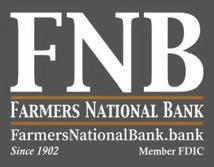
National Sustainable Agriculture Coalition.
• Participated and won the national campaign to end the mandatory pork checkoff.
• Hosted “Planting the Seeds for Change: First Alliance Assembly Highlights” to gather statewide members and groups.
2010S
• Advocated for the Seed Sharing bill passed by the legislature to legalize seed libraries.
• Hosted first farm-to-table series, “Local Flavors,” in central Illinois.
• Advocated successfully for passage of the first Illinois Cottage Food Law.
• Published state’s first Cover Crop Business Directory.
2020S
• In response to the pandemic impact on the food system, distributed $250,000 through the Resilience Fund to assist farmers in scaling up their operations to meet
See 50 YEARS, Page 20
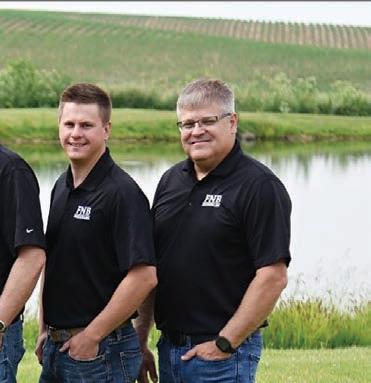
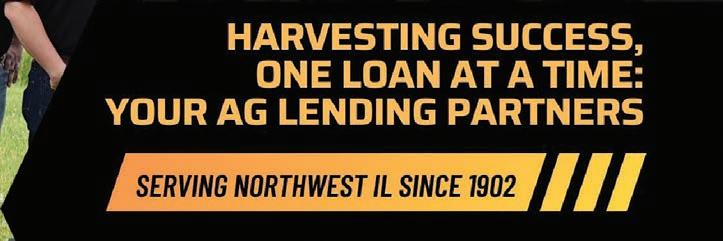



Streator Farm Mart
Streator Farm Mart 1684 N 17th Rd
Streator IL 61364
815-672-0007 www.streatorfarmmart.com
Your hometown Kabota dealer of choice







*© Kubota Tractor Corporation, 2024. $0 Down, 0% A.P.R. financing for up to 54 months or customer instant rebates of $2000 are available on purchases of new Kubota SIDEKICK SPECIAL EDITION series equipment from participating dealers’ in-stock inventory. Promotional rate available to qualified purchasers through Kubota Credit Corporation, U.S.A.; subject to credit approval. Example: 54 monthly payments of [term-amount] per $1,000 financed. $2000 rebate is not available with 0% APR or other promotional financing. Offers expire 12/31/24. Terms subject to change. This material is for descriptive purposes only. Kubota disclaims all representations and warranties, express or implied, or any liability from the use of this material. For complete warranty, disclaimer, safety, incentive offer and product information, consult your Dealer or KubotaUSA.com. Your Kubota Limited warranty gives you specific legal rights. You may have other rights which vary from state to state. 2 years limited warranty or 1000 hours (whichever occurs first). Kubota Tractor Corporation does not authorize any person to create for KTC any obligation or liability other than that stated in the limited warranty.
50 YEARS
FROM PAGE 19
the skyrocketing demand for reliable, healthy local food.
• Successfully advocated for the Seed Library Act to legalize seed libraries in Illinois and the Home-toMarket Act to expand cottage food law as help small farm and food businesses grow.
• Secured $500,000 in state funding for a SNAP match program at farmers markets allowing SNAP recipients to afford fresh fruits and vegetables from local farms.
• Helped found national Campaign for Family Farms and the Environment to stop industrial livestock CAFOs.
• Published “Putting Local Food on the Table in Illinois: Barriers and Opportunities for Value-Added
Agricultural Enterprises and Direct Marketing by Illinois Farmers.”
• Passed the Illinois Local Food, Farms and Jobs Act, which created a council to address food system issues and a goal of shifting 20% of state purchasing to local food by 2020.
• Established Buy Fresh Buy Local Central Illinois chapter.
• Held the first Dishing on the Farm Bill event to organize farmers and eaters around federal food and farm policy.
• Stopped a proposed ban on raw milk sales, enabling farmers to legally sell raw milk on farm.
• Successfully supported passage of the Industrial Hemp Act.
• Successfully advocated for funding to create the state’s first program to reward farmers for using the conservation practice of cover crops, Fall Covers for Spring Saving.
Did you know?
Farmers and growers face a significant threat in the years to come as industrial agriculture operations continue to expand� According to the National Resources Defense Council, industrial agriculture is the large-scale, intensive production of crops and animals Such operations make it more difficult for small farmers and growers to turn a profit, and they often involve the use of chemical fertilizers and pesticides The use of such products poses an additional threat to small farmers and growers, as the Union of Concerned Scientists notes that the heavy application of fertilizers and pesticides accelerates soil erosion and increases pest problems Consumers concerned by the effects of industrial agriculture on the environment and on small farmers’ and growers’ ability to earn a good living can support efforts such as regenerative farming and organic farms AG223786





















Farmland owners get tips for success
By TOM C. DORAN tdoran@shawmedia com
OGLESBY, Ill. — Owning farmland goes well beyond simply growing a crop, and the upcoming second annual Farmland Owners Conference will help sort out and clarify questions and concerns.
The University of Illinois Extension’s event, designed to empower current and future farmland owners, will be held from 8 a.m. to 3 p.m. Nov. 25 at Illinois Valley Community College in Oglesby.
Many moving pieces go into owning land. Ownership can often create questions and become stressful and overwhelming for the inheritor, purchasers, farmer, rent, families and anyone involved.
Conference presentation and discussion topics include:
• Negotiating cash rent.
• Understanding current land values and appraisals.
• Soil fertility: Protecting your investment.
• Solar energy on your land.
• Maintaining profits while protecting the environment.
• Types of insurance you
need for your farm.
• Navigating Farm Service Agency forms and requirements.
• Estate planning.
• Organic production.
“There is a lot that goes into owning farmland, even if you are not the one working the land,” said Emily Hansen, conference co-organizer and U of I Extension commercial agriculture educator. “Landowners face their own unique set of challenges and opportunities.”
Hansen shared that the conference is a chance for landowners to gain valuable knowledge and insights from university and industry experts on a wide range of topics critical to their success in an approachable, straightforward way.
“A lot of Illinois landowners have bits and pieces of it, but they don’t have the whole thing. The conference helps bring it all together,” said Kevin Brooks, conference co-organizer and U of I Extension farm business management and marketing educator. Brooks mentioned that when planning the confer-
ence for another year, it was important to include speakers and topics that would benefit a range of attendees.
This includes farmers who are tenants, as well as family members of the farmers and landowners who are new to the family and world of agriculture.
The conference offers a valuable opportunity for landowners to connect with industry professionals, peers and potential partners.
Attendees will walk away with the knowledge needed to manage and maintain their land, develop strong working relationships with tenants and farmers and confidently plan out the future legacy of their land.
Registration fee is $65 and covers all presentations, refreshments and lunch by Nov. 20 at go.illinois.edu/Landowner2024.
For questions or if a reasonable accommodation is needed to participate, contact Hansen at 815-224-0896 or emhansen@illinois.edu. Early requests are strongly encouraged to allow sufficient time to meet access needs.





